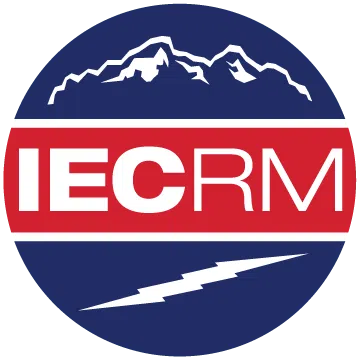IECRM MEMBER FORUM RECAP

IECRM MEMBER FORUM RECAP
Powering Through COVID: “Surge Capacity” and What That Means for Business & Our Employees
Wednesday, September 16, 2020
Hosted by IECRM
Watch the VIDEO RECORDING of this week’s forum.
COVID-19 has thrust upon all of us different mental, physical and emotional issues. This is true for both employers and employees. How do we move forward?
“Your ‘Surge Capacity’ Is Depleted — It’s Why You Feel Awful”
This article talks about how we can regulate and move us forward following the pandemic both physically and emotionally.
What is surge capacity in acutely stressful situations like COVID-19? Our SMEs talked today about how the pandemic has demonstrated both what we can do with surge capacity and the limits of surge capacity. Joining us on the forum were subject matter experts that covered the hot topics this week – and what next steps we all need to be thinking about:
- Micah Dawson, Attorney at Law
Fisher & Phillips, LLP
[email protected] | O: (303) 218-3658 https://www.fisherphillips.com/offices-denver
- Bruce Siegel, CEO and Partner
Karrikins Group
[email protected] | O: (720) 399-6973
https://www.karrikinsgroup.com
- Kate Huckabay, Consultant
Karrikins Group
[email protected] | O: (720) 399-6973 https://www.karrikinsgroup.com
- IECRM Members: Jeff Magee (Magee Electric); Leighland Gutierez (Courtesy Electric); David Jones (QED); John Prellwitz (Milwaukee); Bryan Beckett (Office Sensei); DJ Barajas (ABB); Jason Sharpe (Namasté Solar)
Updates to COVID Regulations and the DOL FFCRA:
- Last Friday, the US Department of Labor sent out updates to employer guidelines for the FFCRA.
- Fisher Phillips Alert can be found here: Labor Department Revises COVID-19 Leave Regulations ,
Broadening Coverage For Healthcare Workers And Clarifying Other Employer Obligations
Top 5 Takeaways from the new guidelines for the FFCRA:
- The definition of workers being healthcare providers was narrowed specifically.
- Leave and the FFCRA can only be taken if there is work to take leave from. If they are furloughed, they do not meet this requirement.
- If an employee leaves intermittently, they still need to have employer approval. They are bringing the FFCRA into alignment with the FMLA.
- Employees must give employees information supporting their leave as soon as practical. Caution-be careful with this. If an employee is out for two weeks because of COVID, take it to counsel to protect both the employee and the employer. You don’t want to open your business up for a lawsuit.
- In terms of the information about giving notice about family medical leave, this is also on “an as soon as practical” basis. Give leave first and then follow-up to get paperwork.
Surge Capacity vs Power Surge
When you experience an electrical power surge, sooner or later, you will have to reset every area that has been impacted by the power surge. This is the same for the “surge” we are experiencing due to COVID-19. We have experienced something in our systems i.e. physical, mental, emotional, regulations issued weekly change rapidly and new regulations are issued. It can be confusing and highly stressful. How do we reset and re-adjust our “systems” to be sure they are in working order and ready to progress toward the known and mostly unknown future?. READ: “Your ‘Surge Capacity’ Is Depleted — It’s Why You Feel Awfu l”
Definition of Surge Capacity
- We are now reimagining what this will look like going forward.
- What are the new questions we can ask?
- How can we eliminate all or nothing thinking?
- What is the real decision point you are heading toward?
- Is it to try to go back to pre-COVID life? Or are you going to move forward?
- How do we reimagine our lives, businesses, and opportunities?
Maintained Optimism
- How you show up is infectious as a leader in your organization/business.
- Negative dispositions will run fast and be stronger, so it is imperative to keep a positive attitude and allow that to be what leads your team.
- Setting behavioral expectations in normal times is important, but it is even more important now in this present situation.
- Your team is looking to you to see how you are handling the stress.
- Vacation should not be optional.
- Leaders need to hold themselves and their teams accountable.
2 PDFs from Karrikins Group are attached that provide additional detail:
- “COVID-19 WAS A BETA TEST; NOW YOU HAVE TO MAKE A DECISIO N”
- “SEIZE THE MOMENT: 6 WAYS TO RE-IMAGINE WORK TODAY”
The Gear-Up Model
- Give up on going back. Focus on the benefits of the changes that have happened during the last six Less commuting, more flexibility with your schedule.
- Eliminate all or nothing thinking. Recognize that you can be in the “messy middle.” Though it is uncomfortable, it has a lot of opportunities.
- Ask questions. There are different ways to connect. Engage with your team to ask how we can integrate our personal worlds and professional worlds and be ok with that. Allow flexibility to accommodate the needs.
- Rethink the workday. There has been an emphasis on a 9-5 workday, but with the “new normal,” adjustments may need to be made to accommodate needs of staff. Communicate differently.
- Understand the costs and benefits of remote working; broader market because more people are comfortable meeting virtually. It may cost upfront to provide necessary materials needed to work from home. Commuting has decreased which also makes for happier employees.
- Pull in your colleagues. No single person can design the new normal. Collaborate to reimagine and design how your office will work going forward.
Give recognition to your employees.
- Provide your employees with trusted information so that they know they are not alone, and they are supported in what they have to do.
- One of the largest challenges is the in-person team meetings.
- Go to smaller groups with a face-to-face meeting with leadership and the team gives the team confidence in their leadership team.
- How do we have company events with the restrictions?
- People who work in the office are segregated from those in the field. o Work on figuring out how to recreate the inclusion virtually. o What are the group dynamics that we need to shift?
- How do we meet in a socially distanced environment?
- Because this was so sudden and new, we have had to learn as we’ve gone through the weeks and months. How can we rise to the challenge?
- If you look at the way society has been evolving, things have become more virtual.
- How do you build relationships virtually? COVID has super-charged this evolution. How do we as humans adapt to these changes? Those who weren’t so tech-savvy in February have had to grow and embrace the changes. It’s changed a lot of foundational things.
- There have been some really great things that have come out of this forced-hand by COVID. Things that were once strategic plans are now in full play because they had to be put in place.
Impact on Global/Large Companies
- Many put the entire company on Stay-at-home work.
- Redirect resources to get employees what they need to work from home.
- Working remotely means having to do virtual sales meetings; Pushes the limits.
- Preserving the company culture takes more than just adapting.
- With COVID, it’s much more difficult to stay in front of customers.
- It’s important to adapt to the customer’s needs and find creative solutions for meeting.
- Before COVID, Skype Calls were common. But with Zoom, people have become more accustomed to being on camera which allows for the face-to-face aspect of sales.
Overall Impact
- The thing that sticks out is the challenge of navigating the different viewpoints.
- There are different scenarios with each customer.
- Trying to make sure you’re doing it right while trying to make sure you are honoring the positions of your customers, makes it the greatest challenge.
- There’s more stress in employee and employer relationships because of the challenges.
- Communication is the key! Make sure you are checking in with your team even when you don’t think you have to. It reminds the team that they have an open door to talk and alerts you of any issues you may not be aware of.
- Be proactive in reaching out.
- Create a space for quality conversations.
- Over-communicate and be overly transparent going forward.
- The easiest way to lose confidence from your employees is by promising to get back to them and then forgetting. This makes them feel unvalued.
- If one person has a question, more than likely more staff members have the same question.
Additional Resources from our Subject Matter Experts:
Fisher Phillips:
- https://www.fisherphillips.com/fisher-phillips-comprehensive-covid-19-resource-center
- FP COVID-19 Briefing: Vaccines, Flu Season, and Common Workplace Misunderstandings
Additional COVID-19 Links
- State of Colorado COVID Resources https://covid19.colorado.gov/protect-our-neighbor s
- Department of Labor Families First information: https://www.dol.gov/agencies/whd/pandemic/ffcra-employee-paid-leave
- IECRM COVID-19 Updates and Resources (with links to all forum recaps and resources):
/iecrm-covid-19-updates-resources/
